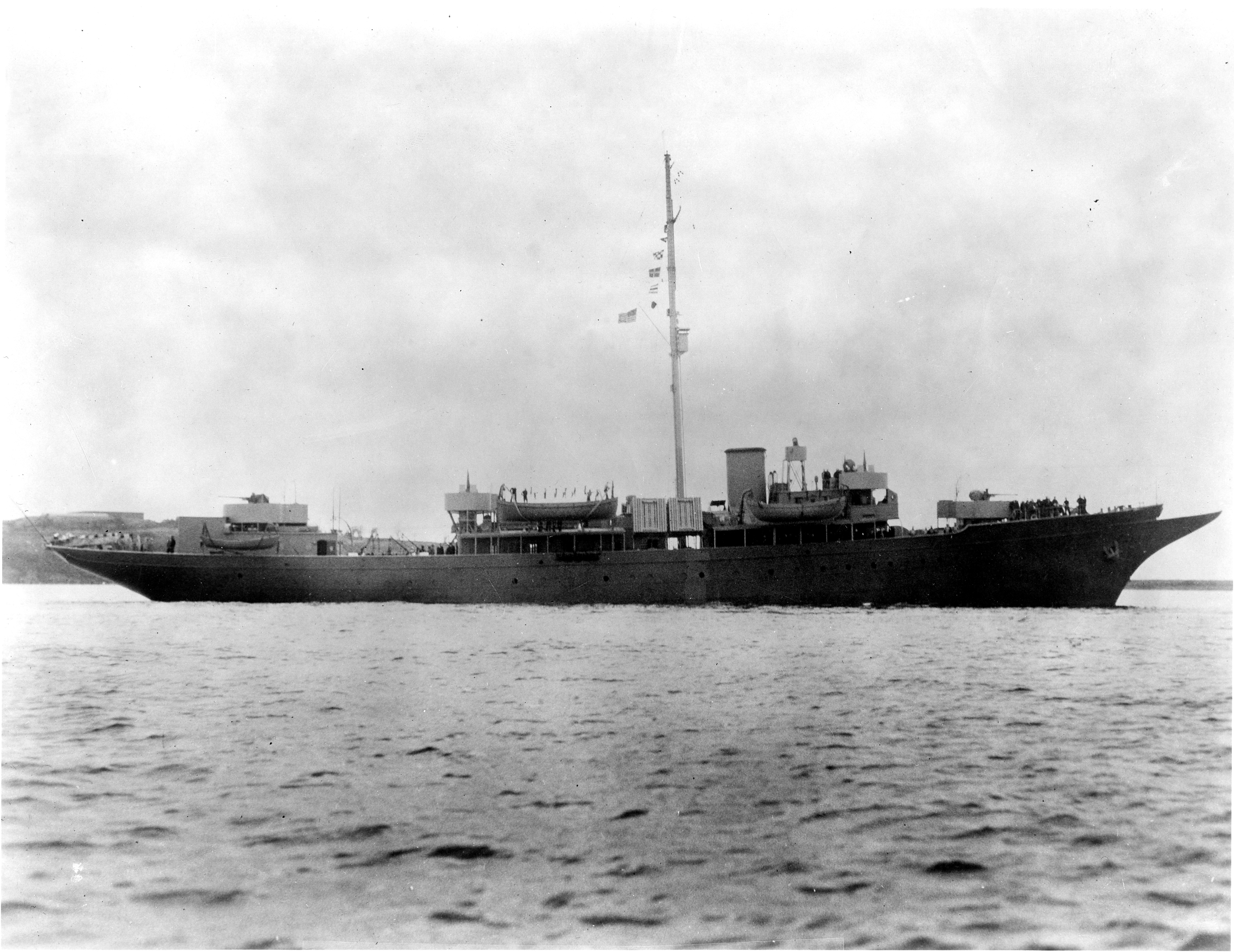African Americans have served in the U.S. Coast Guard throughout its 230-year history, but their participation in the service has been largely overlooked.  So it is only fitting that we should document some of their participation by continuing with the Coast Guard Academy, which pioneered the role of African-American officers in the U.S. sea services.
So it is only fitting that we should document some of their participation by continuing with the Coast Guard Academy, which pioneered the role of African-American officers in the U.S. sea services.
The first African-American officers to serve in the modern Coast Guard received their training at the Academy. Instead of entering as cadets, these men came through the Reserve Officer Training Course, forerunner of today’s Officer Candidate School. The second graduate of that program, Harvey Russell, had a unique background. Born in 1918, in Louisville, Kentucky, Harvey Clarence Russell Jr., was an Eagle Scout and son of a professor at Western Kentucky University. He completed a four-year degree at Kentucky State University, where he lettered in football. He later undertook graduate studies at the University of Michigan and Indiana University. At the start of the war, before completing his studies, he began teaching high school then took a job machining top-secret bombsight parts for the war effort.
 In December 1942, Russell enlisted in the Coast Guard as an apprentice seaman and advanced to coxswain within four months. The service recognized his potential as a leader and teacher. The serviced assigned him as Signalman Instructor to the Advanced Seamanship School at the Coast Guard’s integrated Manhattan Beach Training Station in New York City.
In December 1942, Russell enlisted in the Coast Guard as an apprentice seaman and advanced to coxswain within four months. The service recognized his potential as a leader and teacher. The serviced assigned him as Signalman Instructor to the Advanced Seamanship School at the Coast Guard’s integrated Manhattan Beach Training Station in New York City.
Less than a year later, in September 1943, Russell began the Coast Guard’s Reserve Officer Training Course at the Coast Guard Academy. He received very high marks as a leader and was popular both on and off the Academy grounds. He completed training in February 1944 and joined the Coast Guard’s first African-American officer, Lt. j.g. Joseph Jenkins, aboard the Sea Cloud. In 1943, the Coast Guard initiated an experiment in shipboard desegregation. That year, the Coast Guard-manned USS Sea Cloud became the federal government’s first deliberate test of desegregation aboard a U.S. ship. The cutter’s personnel included white and black officers and enlisted men. Newly promoted to lieutenant junior grade, Jenkins served as the Sea Cloud’s navigation officer while Ensign Russell served as the training officer. The two men remained on board Sea Cloud through most of 1944 and became close friends.
Late in 1944, Sea Cloud was decommissioned and Jenkins and Russell parted company. However, in 1945, they were re-united in the Pacific to serve aboard the patrol frigate USS Hoquiam, a second Coast Guard experiment in  desegregation. In October 1945, after departing Hoquiam, Russell assumed command of the U.S. Army fuel vessel TY-45, manned by an all-white Coast Guard crew. In so doing, Russell became the fourth black captain of a U.S. government vessel and the fifth minority skipper to serve in the Coast Guard. In 1961, Samuel Gravely received the distinction of becoming the first African-American officer to command a U.S. Navy ship over 15 years after Russell.
desegregation. In October 1945, after departing Hoquiam, Russell assumed command of the U.S. Army fuel vessel TY-45, manned by an all-white Coast Guard crew. In so doing, Russell became the fourth black captain of a U.S. government vessel and the fifth minority skipper to serve in the Coast Guard. In 1961, Samuel Gravely received the distinction of becoming the first African-American officer to command a U.S. Navy ship over 15 years after Russell.
Russell served with distinction in the Coast Guard. In 1946, after commanding TY-45 in the South Pacific, he sent a letter to the Coast Guard personnel office. In the letter, he wrote, “During the past four years, the Coast Guard has built up good will due to its race relations policies and is considered the most liberal of all the armed forces. It is for this reason that I feel I could be integrated into the regular service.”
Unfortunately, after the war, all service members were either returned to their prewar rank or transferred to reserve status. By 1947, Russell had transferred his commission to reserve status and returned to civilian life.
status. By 1947, Russell had transferred his commission to reserve status and returned to civilian life.
In civilian life, Harvey Russell continued to blaze a trail for minorities. He became an executive with the Pepsi-Cola Company and, in 1962, broke the U.S. corporate color barrier after receiving a promotion to Vice President of Corporate Planning for Pepsi-Cola. In 1998, after a distinguished corporate career, he passed away at the age of 79.
During his time in the Coast Guard, Harvey Russell pioneered ethnic diversity in the U.S. military. He was one of the first African Americans to receive officer training at the Coast Guard Academy and served as an officer aboard the nation’s first desegregated ship. He was also am ong the first black officers to command a U.S. ship, doing so many years before the same color barrier fell in the Navy.
ong the first black officers to command a U.S. ship, doing so many years before the same color barrier fell in the Navy.
However, Harvey Russell was not concerned with his historic achievements. Like other wartime Coast Guardsmen, his primary concern was to serve his country, apply his military training and support the war effort. Thousands of African-American Coast Guard men and women have followed in his path. He was a member of the long blue line and proved a great credit to his service and country.